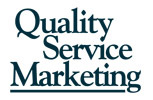Lately I’ve been hearing more about employees disengaging at work due to a condition they describe as “institutional disrespect.” This occurs when new or newly-assigned managers, with upper management’s complicit support (or feigned ignorance?), make decisions with little regard for organizational protocol. For example, the manager who automatically sides with a group of employees in departmental disputes without fully investigating the situation as prescribed in HR policy. Or a supervisor who reverses a customer service rep’s appropriate handling of a customer problem without consulting the employee to explain the change. The result of continually undermining employees’ efforts, particularly when they’re performing according to company standards, is increased employee frustration and disengagement.
Most employees will give new managers the benefit of the doubt at the beginning of their tenure. But when a manager continues to dismiss company policies and procedures, employees begin to wonder: “Are the higher-ups blind to this boss’s performance? Or is management trying to make our work difficult as a way to get rid of us?” Such speculation plants the seeds of discontent as employees can’t fully engage when they don’t feel respected by the very people they work for.
“R-E-S-P-E-C-T … find out what it means to me”
Employee engagement and retention specialist, Dr. Paul Marciano describes how respect can best be applied in the workplace:
- Recognition – thanking employees, acknowledging their contributions
- Empowerment – providing the necessary training and tools employees need
- Supportive feedback – giving employee feedback that’s positive and corrective
- Partnering – fostering a collaborative workplace
- Expectation setting – establishing clear goals and accountability
- Consideration – demonstrating courtesy, kindness and empathy
- Trust – demonstrating faith in employees’ skills and abilities, supporting their decisions.
Employees in organizations that practice institutional disrespect find little evidence of true partnering, consideration and trust.
“Employee engagement depends upon the extent to which individuals respect their organization and its leadership, and feel respected.” Dr. Paul Marciano






